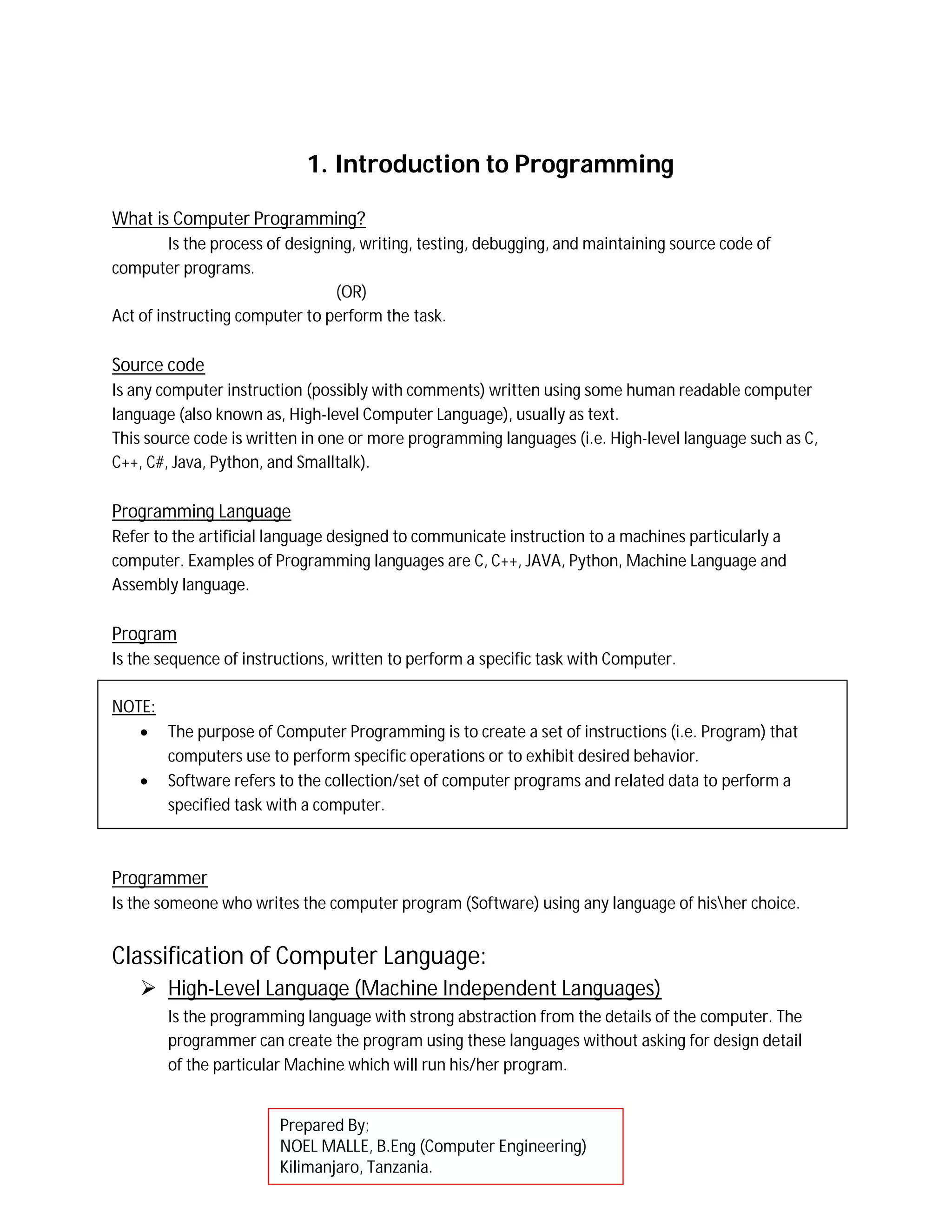Computer programming is the process of writing source code instructions in a programming language to instruct a computer to perform tasks. Source code is written text using a human-readable programming language like C++, Java, or Python. A program is a sequence of instructions that performs a specific task. Programmers write computer programs by designing source code using programming languages. Programming languages are classified as high-level or low-level. High-level languages provide abstraction from computer details while low-level languages require knowledge of computer design. Language translators like compilers and interpreters convert source code into executable programs.



